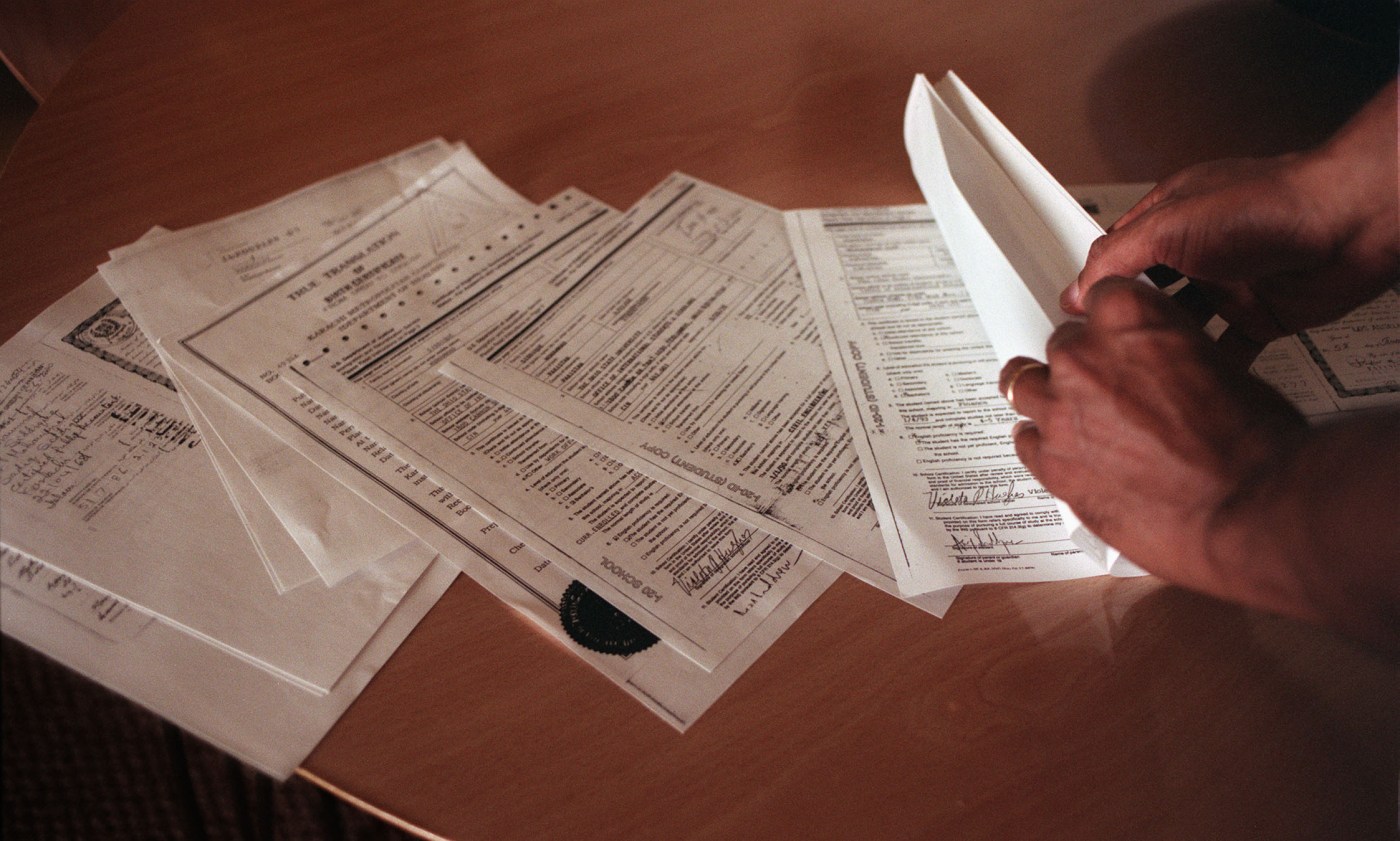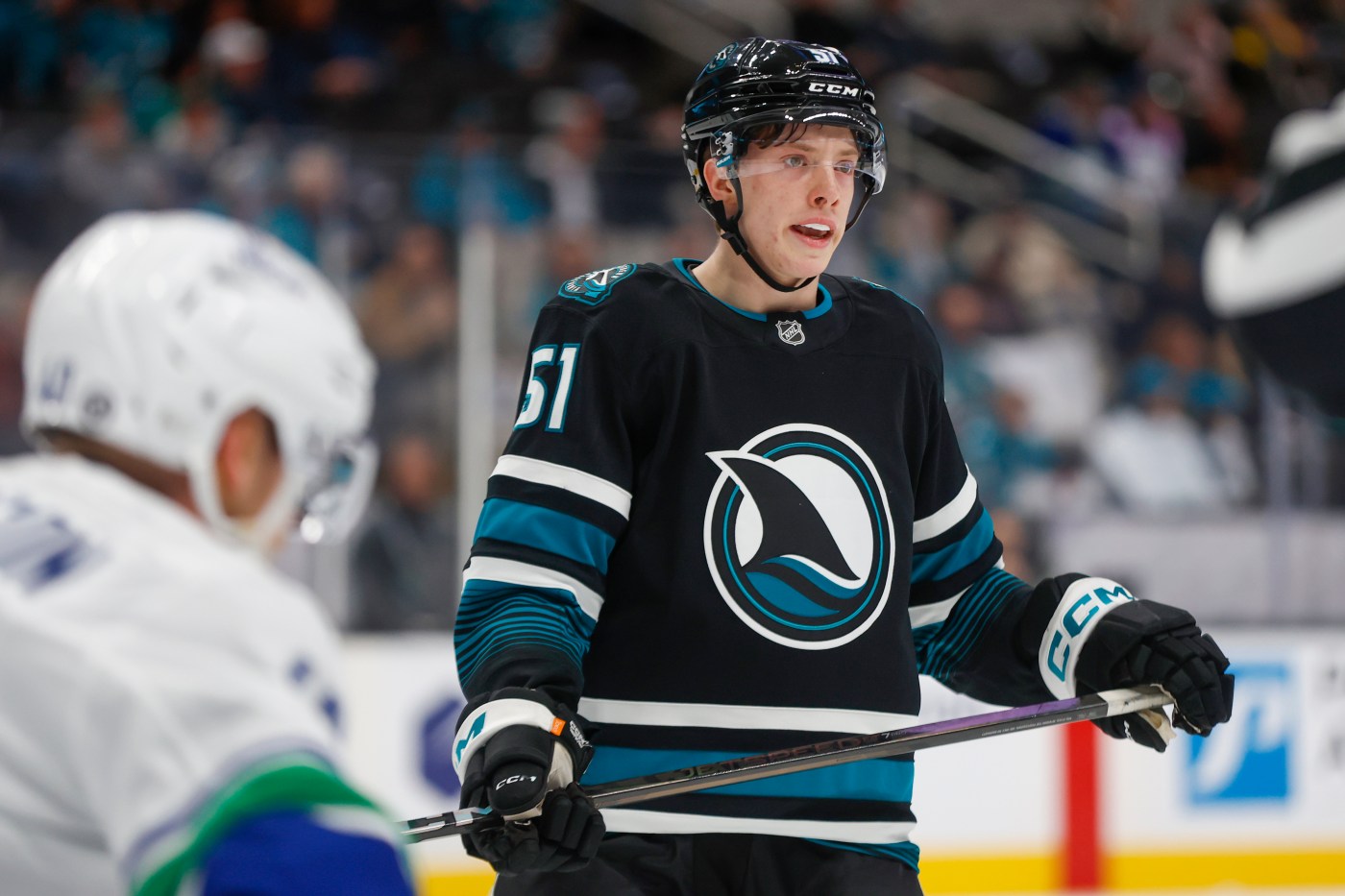The Hotline mailbag publishes weekly. Send questions to [email protected] and include ‘mailbag’ in the subject line. Or hit me on the social media platform X: @WilnerHotline
Some questions have been edited for clarity and brevity.
Did the non-Los Angeles schools in the Pac-12 ever ask USC and UCLA how things were going? Should the Trojans and Bruins have received greater revenue distributions than the others? — Steve L
This topic is rich enough to fill several chapters in a book on the Pac-12’s demise, but real-time context is essential, so let’s begin there.
Unequal revenue sharing is here to stay, with the ACC as the first Power Four conferences to adopt the policy.
Last spring, in response to the lawsuits filed by Clemson and Florida State — as a means of mollifying the rebels — the ACC created a business model in which each school is guaranteed a minimum amount of annual revenue from the conference and all distributions over that figure are based on success in the College Football Playoff and NCAA Tournament and success in the TV ratings game.
The Big Ten will join the ACC with an unequal share model at some point. That day could come sooner than later if the conference accepts approximately $2 billion in private capital later this year. Or it could come at the turn of the decade if the private capital option is rejected and the Big Ten renegotiates its media rights deals in 2029-30.
Ohio State president Ted Carter signaled as much recently during an interview with USA Today. Asked about unequal revenue shares, Carter said: “There’s only a couple of schools that really represent the biggest brands in the Big Ten, and you can see that by the TV viewership … I think that’s going to be a conversation that will be had over time.”
And it’s worth noting that the Pac-12 used an unequal-share model in the years prior to expansion. The blueprint in the 1990s and 2000s was based on appearances on network television and invariably led to USC and UCLA taking above-average slices of the revenue pie.
Former commissioner Larry Scott changed that when the conference signed the $3 billion TV deal and added Utah and Colorado. From 2013 through 2024, the Trojans and Bruins received the same distributions as Oregon State and Washington State. And they weren’t thrilled about it.
With that context, we wonder:
Would the previous version of the conference exist today if the schools had implemented revenue models based on performance (postseason success) and/or brand strength (TV ratings)?
There are no guarantees in realignment, but we believe the answer is yes.
In fact, it’s yes twice over.
Knowing they would receive above-average revenue when the Pac-12 renegotiated its media deal for the contract cycle in 2024 and beyond, the Trojans would have been far more likely to stick around and not hauled UCLA with them into the Big Ten.
After all, the disparity between above-average revenue in the Pac-12 and average revenue in the Big Ten (as a 16-school conference) would not have been large enough to justify leaving.
But there’s another layer to this, folks. Because even after the L.A. schools bolted, the conference had the chance to implement a performance-based revenue model that would have kept Washington and Oregon happy. But it passed on the chance, which led to everything going ka-BOOM on Aug. 4, 2023.
During that tumultuous post-L.A., pre-collapse stretch, one university president even suggested an unequal share model, according to a source familiar with the Pac-12’s internal discussions. But enough schools stood in opposition to kill the idea.
(The Hotline has not confirmed the identity of that president to the degree required to meet publication standards, but it stands to reason the concept would come from a school likely to benefit from a performance-based model.)
“Usually with these things, the bottom half of the conference just wants to say no and call the bluff, but if the (big brands) walk, it’s over,” the source said.
“Imagine holdouts in the Pac-12 saying no after USC and UCLA had left. Only one school was saying, ‘Let’s have some performance-based compensation.’ And people weren’t considering it.
“If you went to Washington State and Oregon State now and said, ‘Would you have pushed for a performance-based model to keep USC? Would you have jumped at the idea when it was brought up (after the L.A. schools left)?’ Their answer is, ‘(Bleep), yeah.’”
That said, performance-based revenue models are not easy to sell. That was especially true of the Pac-12 back in the 2010s and early 2020s, when the threat of imminent demise did not exist and USC wasn’t even the best football program in the conference.
And it’s even more difficult to ram through the board of directors when the schools don’t trust the commissioner to spearhead a smart, fair, practical strategy. That was certainly the case with both Scott and George Kliavkoff.
The process must start with strong alignment between the conference office and the campuses that’s built over time.
The bottom line?
Revenue models based on performance and brand value could have saved the Pac-12, not once but twice. But we’d suggest that hindsight isn’t worth your time because the leadership necessary to implement the plan never existed.
What do you make of the $2 billion private capital deal the Big Ten is reportedly working on with private equity investment? — @Cargoman0363
It’s risky, but the level of risk depends on details that are not publicly known at this point. And it’s possible the Big Ten itself doesn’t even know the fine print, so to speak, because the schools are still negotiating with each other and the private capital companies.
Generally, we view every Big Ten strategic move through the lens of its sugar daddy, Fox, which owns the conference’s media rights through its majority stake in the Big Ten Network.
And if the private capital deal results in the schools extending their grant-of-rights agreement into the 2040s, Fox benefits — the long-term agreement would provide certainty and make a super league far less likely.
But nothing of this magnitude would occur without support from Ohio State and Michigan. If they oppose, the deal’s off. And it’s worth wondering why the Buckeyes and Wolverines would bind themselves to an entity for the next 20 years given the highly fluid landscape.
There’s only one reason, in our opinion: The tier revenue distribution structure created under the terms of the private capital agreement would give the two behemoths such a massive financial advantage that they couldn’t pass on the opportunity.
And if that’s the case, why would the other schools agree? Because they are desperate for stability and don’t want the Buckeyes and Wolverines to leave for a super league.
In other words, it’s an unhealthy situation at the core.
We’ll address this fascinating topic in greater detail in the coming weeks.
If the Big Ten takes the private equity deal, how will USC coach Lincoln Riley handle the Los Angeles to Riyadh to Columbus portion of the schedule? — @WorkishFromHome
Saudi Arabia’s sovereign wealth fund won’t be the source of the Big Ten’s capital infusion, but we like what you did there: The joke neatly wraps the news of the week with the whines of forever from Riley, who never seems to miss a chance to make excuses.
And last week, of course, he expressed frustration that USC’s 8 p.m. kickoff against Michigan State (Sept. 20) was followed immediately by the 9 a.m. kickoff at Illinois (Sept. 27).
If only there had been a way for USC to avoid playing at 9 a.m.
The Trojans were perfectly within their right to leave the Pac-12 for the Big Ten, but it’s a terrible look for the school when Riley — in many ways, he’s the public face of the university — complains about the schedule.
And we’d argue it’s not good for the football program. Excuses undercut accountability and lay the foundation for fourth quarter meltdowns.
The Trojans have experienced quite a few the past season-and-a-half, and it all starts with Riley.
How warm is Lincoln Riley’s seat getting (or should be getting)? — @kentura82
It’s warm, for sure. But the likelihood of warm becoming hot this season is low. It would cost the Trojans roughly $80 million to terminate Riley this year, based on our understanding of his contract (which is not subject to public records requests).
Unless the Trojans collapse, it’s difficult to envision the school mustering the cash — either from internal sources or from donors — to make a change.
(Don’t forget, USC would have to pay the outgoing assistants and the incoming staff, so we’re approaching the $100 million neighborhood in total.)
How would the Hotline define a collapse?
Well, the Trojans (4-1) would need to lose more games than they win for the remainder of the season. Yes, they play Michigan, Notre Dame and Oregon, but the other four games are fairly manageable (Iowa, Nebraska, Northwestern and UCLA).
Put another way: There probably won’t be serious discussions about a coaching change if the Trojans are 8-4 or better. But if they skid to 7-5 finish, the administration might attempt to round up the cash for a buyout, by any means necessary.
It crossed my mind that with the elevation of Dillon Gabriel to starting quarterback in Cleveland, four ex-Oregon Ducks are currently starting for NFL franchises. Is it me, or is that unusual? — Mike G
Gabriel was elevated to QB1 for the Browns this week and will join Justin Herbert (Chargers) and Bo Nix (Broncos) to give the Ducks three starters this week. Marcus Mariota is not expected to lead the Commanders now that Jayden Daniels has been cleared to play, so we don’t see a scenario in which Oregon will account for four of the 32 starters.
Still, three of 32 is impressive.
But the Ducks aren’t alone. Alabama, for instance, has four starters this week with Tua Tagovailoa (Dolphins), Bryce Young (Panthers), Jalen Hurts (Eagles) and Mac Jones (49ers), who replaced the injured Brock Purdy in the win over the Rams on Thursday night.
And Oklahoma has six: Gabriel, Hurts, Baker Mayfield (Bucs), Kyler Murray (Cardinals), Caleb Williams (Bears) and Spencer Rattler (Saints).
Yes, the transfer portal has skewed that statistic, but it’s fun to examine nonetheless.
With the transfer period being now limited (pending any litigation), how will schools now go about poaching and replenishing their rosters? — @MrEd315
Poaching is a 24/7 endeavor, and that won’t end with the implementation of a single transfer window from Jan. 2-16 — assuming that recommendation receives final approval and holds up legally for the next four months.
(Players participating in the College Football Playoff championship, scheduled for Jan. 19 this season, would have a five-day window after the game to make a move.)
The change should add some sanity to the transfer process, but absent a collective bargaining agreement, poaching will remain ubiquitous.
The single-portal plan, which the Hotline addressed prior to the season as part of a deep dive into changes to the sport’s calendar, is notable for a bevy of reasons.
Two immediately come to mind:
— The Big Ten was on the wrong side of the policy process. Commissioner Tony Petitti pushed for a single transfer window in the spring, while all the other major conferences wanted the window in January.
— Players will be on the move during the CFP, which is a bad look for the sport. Could you imagine NFL free agency unfolding during the playoffs? Would the NBA permit free agency in May or June? Of course not. It’s just one more example of college football’s unique, chaotic, counter-productive calendar.
If Oregon State spent less money on legal fees and spent that money on revenue sharing, do you think the Beavers would still be 0-5? — @NateJones2009
Technically, revenue sharing has been the law of the land since July 1. Although we don’t know the details, it’s difficult to believe the Beavers have spent that much in the past three months.
But we understand the spirit of your question — and chuckled upon first reading.
It certainly does seem like OSU has made a few strategic missteps along the way with football specifically and athletics generally. And the Beavers’ latest move, the NIL partnership with Blueprint Sports, has caused an uproar in Corvallis.
But honestly, we don’t see OSU’s roster as the source of the winless record.
The Beavers have the personnel needed to win six games and secure a bowl bid. They clearly have enough talent to beat Fresno State and should have beaten Houston. At 2-2, with a slew of winnable games in the second half of the season, the current outlook would be much brighter.
The issue is coaching. The Hotline has seen nothing from Trent Bray and Co. over the past year-and-a-half to indicate the staff has what it takes to produce winning seasons with regularity.
Obviously, the special teams are a mess, and we are less than impressed with the offense.
It’s worth noting that the Beavers have a first-time head coach in Bray and a first-time offensive playcaller in Ryan Gunderson. From a tactical standpoint, that’s a fraught pairing. (UCLA had the same combination of rookie head coach and offensive coordinator, and look at the state of affairs in Westwood.)
Related Articles
One year later, the ESPN “College GameDay” experience continues to impact Cal’s football program
CFB picks: Vanderbilt covers at Alabama; Miami, Notre Dame top FSU, Boise St
CBS suffers from dropping SEC for Big Ten, ‘Big Noon’ struggles and more
Pac-12 poaching penalty lawsuit: Judge denies Mountain West’s motion to dismiss
Oregon, USC complain about Big Ten schedule: It’s a terrible look
To circle back to the question: All the money Oregon State has paid attorneys to handle various issues in this treacherous transition period between versions of the Pac-12 would not necessarily have led to a better coaching staff.
Bray was promoted days after Jonathan Smith left in Nov. 2023 and immediately named Gunderson as the offensive coordinator.
What happens to the NCAA Tournament units Gonzaga has earned for the West Coast Conference once the Zags move into the Pac-12? — @CurtisBlack
Good question. The financial components to realignment can be difficult to track, and the Zags have accumulated a load of units for the WCC over time.
For those unfamiliar, here’s a quick explanation: Every game played in the NCAA Tournament is worth one unit to the participating teams’ conferences. The units are paid annually for six years and carry an annual value of approximately $350,000 (the amount increases over time).
In other words, each game the Zags play as a member of the WCC is worth about $2 million over the payout period.
Those units will stay with the conference once Gonzaga moves into the Pac-12 next summer, just as the units earned by the Pac-12 legacy schools stayed with the conference (i.e., Washington State and Oregon State) after the exodus to the Big Ten and Big 12.
By our count, the Zags will leave 45 units behind, plus whatever they earn in the 2026 tournament. That’s at least $90 million over the course of six years, or $15 million annually for the remaining WCC schools to share.
Where is the decision on the Mountain West’s motion to dismiss the Pac-12’s poaching penalties lawsuit? — @ColAthAdv_Will
We saved this for last intentionally and must include a note of transparency: The question was submitted before the court ruled in the Pac-12’s favor on the motion to dismiss.
It’s included here as a means of updating any readers who missed the news Tuesday night that magistrate Judge Susan van Keulen, of the Northern District of California, rejected all four of the Mountain West’s claims.
The ruling allows the Pac-12’s case to continue and makes a trial more likely, although we remain skeptical — a negotiated settlement, with or without a mediator, has always been the most likely outcome.
To be clear, van Keulen’s decision doesn’t indicate the Pac-12 would win the case. But it adds an element of legitimacy to the Pac-12’s claims that the Mountain West must consider as it plots the next move.
And one more thing: The next step, a case management conference, is seven weeks away. Absent a settlement, the legal process has a long, long way to go.
*** Send suggestions, comments and tips (confidentiality guaranteed) to [email protected] or call 408-920-5716
*** Follow me on the social media platform X: @WilnerHotline





